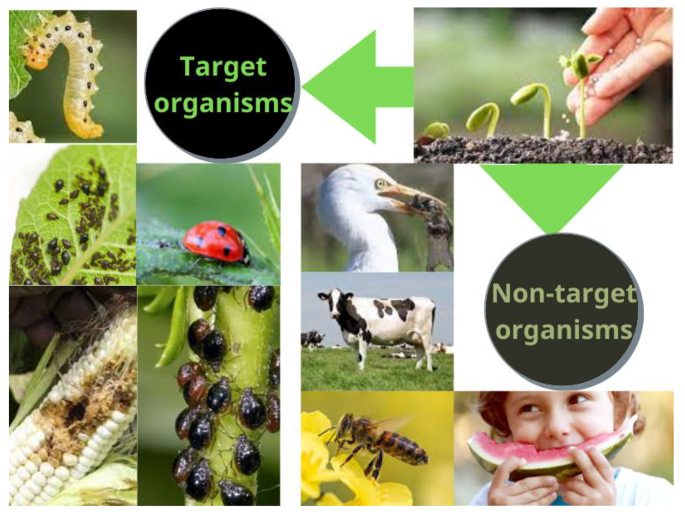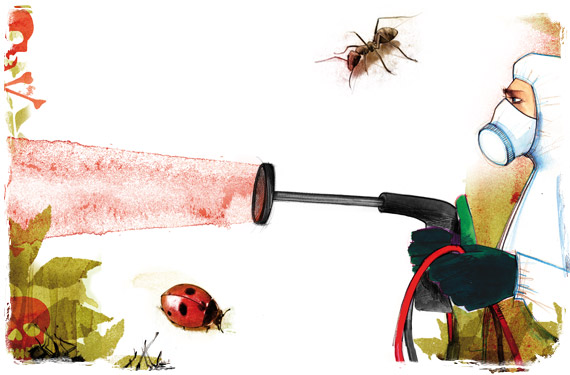Eco Bed Bug Exterminators Dc for Dummies
Eco Bed Bug Exterminators Dc for Dummies
Blog Article
Excitement About Eco Bed Bug Exterminators Dc
Table of ContentsGetting My Eco Bed Bug Exterminators Dc To WorkNot known Facts About Eco Bed Bug Exterminators DcIndicators on Eco Bed Bug Exterminators Dc You Should KnowTop Guidelines Of Eco Bed Bug Exterminators DcThe Main Principles Of Eco Bed Bug Exterminators Dc
Due to the fact that chemicals are poisonous, they are also potentially hazardous to people, animals, other organisms, and the environment. Consequently, people who use pesticides or consistently been available in call with them should understand the family member toxicity, prospective health and wellness effects, and preventative procedures to decrease exposure to the products they utilize. Hazard, or threat, of utilizing pesticides is the possibility for injury, or the level of danger associated with using a pesticide under a provided set of problems.
Applicators can decrease or nearly eliminate exposure-- and thus lower hazard-- by complying with the tag guidelines, utilizing personal protective clothing and devices (PPE), and handling the pesticide correctly. Even more than 95 percent of all chemical direct exposures come from dermal direct exposure, mostly to the hands and lower arms. By wearing a set of unlined, chemical-resistant gloves, this sort of exposure can be nearly eliminated.
The harmful results that happen from a single direct exposure by any type of course of access are called "intense effects." The 4 paths of direct exposure are dermal (skin), breathing (lungs), oral (mouth), and the eyes. Intense toxicity is determined by examining the facial poisoning, inhalation poisoning, and dental poisoning of guinea pig.
The Eco Bed Bug Exterminators Dc Statements
Acute poisoning is gauged as the amount or concentration of a toxicant-- the a.i.-- required to kill 50 percent of the animals in an examination population. This measure is generally expressed as the LD50 (dangerous dosage 50) or the LC50 (dangerous concentration 50). Additionally, the LD50 and LC50 values are based upon a solitary dosage and are taped in milligrams of chemical per kg of body weight (mg/kg) of the guinea pig or partly per million (ppm).
The reduced the LD50 or LC50 worth of a pesticide item, the better its poisoning to people and animals. Pesticides with a high LD50 are the least poisonous to human beings if used according to the directions on the item tag. The persistent poisoning of a chemical is determined by subjecting examination animals to long-lasting direct exposure to the energetic component.
The chronic toxicity of a chemical is much more hard than intense poisoning to figure out through laboratory analysis. Products are categorized on the basis of their family member acute poisoning (their LD50 or LC50 worths). Pesticides that are categorized as highly harmful (Toxicity Classification I) on the basis of either dental, dermal, or breathing toxicity have to have the signal words threat and POISON printed in red with a head and crossbones sign plainly displayed on the front panel of the plan label.
The severe (single dose) dental LD50 for pesticide items in this group ranges from a trace total up to 50 mg/kg. Direct exposure of a couple of drops of a material taken by mouth might be fatal to a 150-pound individual. https://worldcosplay.net/member/1739615. Some pesticide products have just the signal word risk, which tells you absolutely nothing concerning the intense toxicity, just that the product can cause severe eye damage or extreme skin irritation
Getting My Eco Bed Bug Exterminators Dc To Work
In this group, the acute oral LD50 arrays from 50 to 500 mg/kg. A tsp to an ounce of this material could be deadly to a 150-pound individual (bed bug heater rentals). Chemical items categorized as either a little poisonous or reasonably nontoxic (Toxicity Groups III and IV) are called for to have the signal word CAUTION on the pesticide label

All pesticide poisoning worths, including the LD50, can be located on the product's Material Safety and security Data Sheet (MSDS) - bed bug exterminator. Pesticide labels and MSDS can be obtained from retailers or manufactures. Additionally, most items also have information that can be located on the web. The symptoms of chemical poisoning can vary from a light skin irritability to coma and even fatality.
Individuals likewise differ in their level of sensitivity to different levels of these chemicals. Some people may show no reaction to an exposure that might cause severe ailment in others (pest control Washington DC). As a result of his explanation prospective health and wellness issues, pesticide users and handlers must recognize the usual symptoms and signs of pesticide poisoning. The results, or symptoms, of pesticide poisoning can be broadly specified as either topical or systemic.
All about Eco Bed Bug Exterminators Dc
Dermatitis, or inflammation of the skin, is accepted as one of the most generally reported topical impact linked with chemical exposure. Signs of dermatitis array from reddening of the skin to breakouts and/or sores. Some people often tend to cough, wheeze, or sneeze when subjected to chemical sprays. Some people respond to the solid smell and irritating results of oil distillates utilized as service providers in pesticide items.
This sign generally subsides within a couple of minutes after a person is gotten rid of from the direct exposure to the toxic irritant. However, a response to a chemical product that causes a person not just to sneeze and cough however likewise to develop extreme intense respiratory system symptoms is most likely to be a real hypersensitivity or allergy.
Systemic results are fairly various from topical impacts. They typically occur far from the initial factor of call as an outcome of the pesticide being absorbed into and dispersed throughout the body. Systemic impacts commonly consist of queasiness, throwing up, tiredness, migraine, and intestinal problems. In advanced poisoning situations, the individual may experience modifications in heart rate, trouble breathing, convulsions, and coma, which can result in death.
Report this page